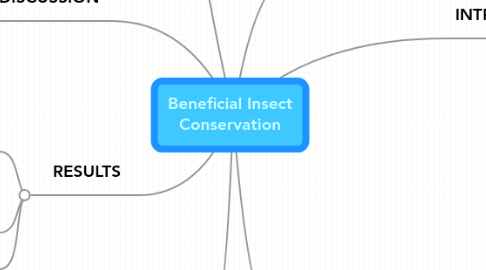
1. TITLE
1.1. Native plant conservation strips for sustainable pollination and pest control in fruit crops
2. DISCUSSION
2.1. Flower strips
2.1.1. Provide necessary resources for beneficial insects
2.1.2. Increase pollination and reduce pest abundance in fruit crops
2.2. Plot establishment expensive
2.2.1. Government funds/incentives for growers
2.2.2. Increase demand for native seeds may bring down cost
3. RESULTS
3.1. Increase pollinator abundance/diversity
3.1.1. Increase pollination
3.1.1.1. Blueberry
3.1.1.1.1. Increase avg. berry weight
3.1.1.1.2. Increase avg. number of mature seeds
3.1.1.1.3. increase fruit yield
3.2. Increase natural enemy abundance/diversity
3.2.1. Decrease in pest abundance
3.3. Plot establishment expensive
4. FIGURES and TABLES
4.1. Fruit yields
4.2. Beneficial insect abundance/diversity
4.3. Pest abundance/diversity
4.4. Flower list and bloom periods
4.5. Economics
4.5.1. Cost of seeds
4.5.2. Cost of site preparation/maintenance
5. INTRODUCTION
5.1. Background
5.1.1. Beneficial insects
5.1.1.1. Natural enemies
5.1.1.1.1. Pest reduction
5.1.1.1.2. Need floral resources
5.1.1.2. Pollinators
5.1.1.2.1. Pollinate crop
5.1.1.2.2. Need floral resources
5.1.2. Wildflowers
5.1.2.1. Annual
5.1.2.2. Perennial
5.2. Literature review
5.2.1. What research has been done
5.2.2. What questions still exist
5.3. Economics
5.3.1. Establishment is expensive
5.3.2. Determine way to make conservation cost effective for growers
6. METHODS
6.1. Native plant conservation strips
6.1.1. Fruit crops
6.1.1.1. Blueberry
6.1.1.2. Apple
6.1.1.3. Cherry
6.1.2. Flower/grass mix
6.1.2.1. 15 native perennial wildflower species
6.1.2.2. 3 native perennial grass species
6.1.3. Flower strip setup
6.1.3.1. Fall Herbicide application
6.1.3.1.1. Pig-till at 1 site
6.1.3.1.2. Apple cider vinegar at organic apple
6.1.3.1.3. Glyphosphate at conventional sites
6.1.3.2. Seeds hand sown in spring
6.1.3.2.1. Mixed with saw dust as a carrier/bulking agent
6.1.3.2.2. Cultipacked/rollered to increase soil/seed contact
6.1.4. Insect observation/collection
6.1.4.1. Visual observations
6.1.4.2. Yellow sticky traps
6.1.4.3. Vacuum sampling
